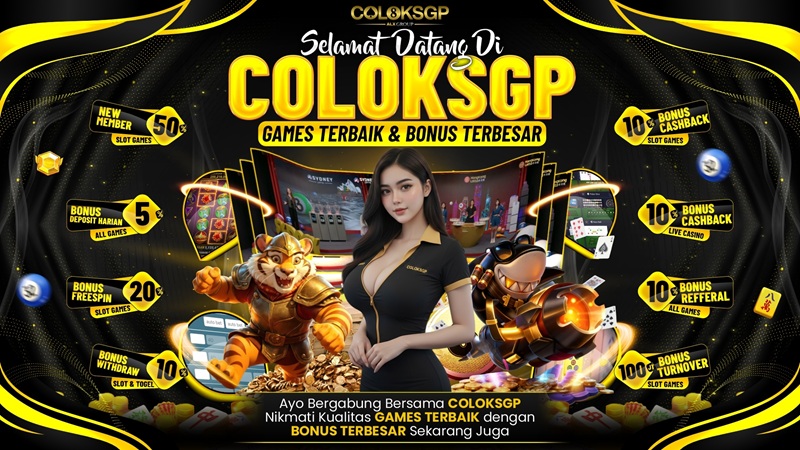Blog do site
Unlock Big Savings with the 2026 Gusto Promo Code – Get $200 Bonus & 3 Months Free Payroll!

Are you looking for a reliable payroll and accounting solution for your business? Look no further than the 2026 Gusto Promo Code! With the Gusto platform, you can streamline your business operations, save time, and stay compliant, all while enjoying amazing deals. At we bring you the latest updates and exclusive offers on Gusto Promo Code.
In this blog post, we’ll dive into why Gusto’s payroll service is one of the most popular in the industry, and how using the 2026 promo code can benefit your business. Let’s explore how you can get your hands on a $200 bonus and 3 months of free payroll with just a few simple steps.
What is Gusto and Why is it a Top Choice for Payroll & Accounting?
Gusto is a powerful all-in-one payroll, benefits, and HR management platform that caters to businesses of all sizes. It simplifies the complexities of payroll processing, employee benefits, tax filings, and much more. Whether you're a small business owner or managing a growing company, Gusto ensures your back-office operations are seamless and error-free.
With Gusto Accounting, you can manage everything from payroll to taxes, to employee onboarding. The platform’s user-friendly interface and automated processes make it easier for business owners to focus on growing their companies while staying compliant with labor laws and tax regulations.
But that’s not all! Gusto offers an array of features designed to streamline your workflow, including:
Automatic Payroll – No more manual calculations or worrying about tax withholding.
Employee Benefits Management – Easily offer health benefits, retirement plans, and other perks.
Compliance Assistance – Stay on top of government requirements like tax filings and labor law compliance.
Easy Onboarding – Quickly add new employees to the system and take care of the paperwork effortlessly.
Get the Most Out of the 2026 Gusto Promo Code: $200 Bonus & 3 Months Free Payroll
Now that you know what Gusto offers, let’s talk about the incredible 2026 Gusto Promo Code deal. With our exclusive offer, you can unlock amazing savings when you sign up for Gusto’s services. Here’s what you can expect:
$200 Bonus – When you sign up for Gusto using our promo code, you’ll receive a $200 bonus. This can be used to offset the cost of your subscription or reinvest into your business.
3 Months Free Payroll – Not only do you get a bonus, but you also get 3 months of free payroll. That’s a fantastic opportunity to test out the platform and see how it can benefit your business without committing to the full cost upfront.
Why is Gusto the Best Choice for Your Business?
At r/Gusto_Promo_Code, we believe in providing valuable information to help you make the best decision for your business. Here’s why we think Gusto is the right choice for you:
User-Friendly Interface – Gusto is designed to be simple and intuitive, making it easy for even non-experts to use. You don’t need to be a payroll professional to handle your business’s HR needs.
Affordable & Scalable – Whether you have a small team or hundreds of employees, Gusto offers pricing plans that can scale with your business as it grows.
Top-Notch Customer Support – Gusto offers exceptional customer support to help you through any issues or questions you might have. You won’t be left in the dark when you need assistance.
Robust Features – From automatic payroll and tax filings to employee benefits, Gusto’s comprehensive features make it one of the most trusted platforms in the industry.
How to Redeem the 2026 Gusto Promo Code
Redeeming your 2026 Gusto Promo Code is easy! Simply follow these steps:

Visit Our Website – Head over to thepage for the latest promo codes.
Sign Up for Gusto – Follow the link provided to sign up for Gusto’s payroll services.
Apply the Promo Code – During checkout, enter the Gusto Accounting 2026 Gusto Promo Code to activate the offer.
Enjoy Your Bonus and Free Payroll – Start using Gusto’s features and enjoy the $200 bonus and 3 months of free payroll!
Conclusion: Get Started Today and Simplify Your Payroll with Gusto!
The 2026 Gusto Promo Code is a fantastic opportunity to save money while enjoying the best in payroll, HR, and accounting services. With Gusto’s powerful platform, you can focus on what matters most: growing your business. Whether you’re a small business owner or managing a larger enterprise, Gusto has the tools and support to ensure your back-office operations run smoothly.
Togel 4D merupakan salah satu jenis permainan angka yang sangat populer di kalangan penggemar hiburan digital berbasis prediksi. Permainan ini mengharuskan pemain menebak empat angka yang akan keluar pada periode tertentu. Dengan tingkat tantangan yang lebih tinggi dibandingkan 2D atau 3D, togel 4D menawarkan sensasi tersendiri bagi pemain yang menyukai analisis angka dan strategi. Popularitasnya terus meningkat seiring dengan kemudahan akses melalui platform online.

Daya Tarik Togel 4D di Kalangan Pemain
Salah satu alasan togel 4d banyak diminati adalah potensi hadiah yang lebih besar. Dengan kombinasi angka yang lebih kompleks, nilai kemenangan yang ditawarkan juga sebanding dengan tingkat kesulitannya. Hal ini membuat permainan togel 4D menarik bagi pemain yang ingin menguji kemampuan prediksi sekaligus mencari hiburan yang menantang. Selain itu, adanya berbagai pasaran internasional juga memberikan variasi pilihan bagi pemain.
Peran Teknologi dalam Perkembangan Togel 4D
Perkembangan teknologi digital memberikan dampak besar terhadap kemajuan togel 4D. Kini, pemain tidak perlu lagi melakukan pemasangan secara konvensional, karena semuanya dapat dilakukan secara online. Platform digital menyediakan tampilan yang informatif, data hasil keluaran sebelumnya, serta fitur statistik yang membantu pemain dalam melakukan analisis angka. Dengan dukungan teknologi ini, pengalaman bermain togel 4D menjadi lebih praktis dan efisien.

Strategi dan Analisis dalam Bermain Togel 4D
Bermain togel 4D tidak hanya mengandalkan keberuntungan, tetapi juga memerlukan strategi dan analisis yang matang. Banyak pemain memanfaatkan data keluaran sebelumnya untuk mencari pola angka yang berpotensi muncul. Selain itu, penggunaan rumus, prediksi, dan diskusi komunitas juga sering dijadikan referensi. Pendekatan yang terencana membuat permainan togel 4D terasa lebih menantang dan menarik untuk diikuti.
Pentingnya Bermain Secara Bijak
Meskipun togel 4D menawarkan hiburan dan potensi keuntungan, pemain tetap perlu mengedepankan sikap bijak. Mengatur batas modal dan waktu bermain merupakan langkah penting agar permainan tetap menjadi sarana hiburan, bukan beban. Kesadaran ini membantu pemain menikmati togel 4D secara positif tanpa mengganggu aktivitas lainnya. Bermain dengan kontrol diri yang baik akan menciptakan pengalaman yang lebih sehat dan menyenangkan.

Togel 4D sebagai Bagian dari Hiburan Digital
Di era digital saat ini, togel 4D telah menjadi bagian dari hiburan online yang digemari oleh berbagai kalangan. Akses yang mudah, variasi pasaran, serta fitur pendukung yang lengkap menjadikan permainan ini terus berkembang. Selama dimainkan dengan tanggung jawab, togel 4D dapat menjadi salah satu bentuk hiburan berbasis angka yang menarik dan penuh tantangan bagi para penggemarnya
OlxToto merevolusi togel online dengan platform yang menggabungkan keseruan, strategi, dan peluang kemenangan besar. Sebagai situs toto online terpercaya, OlxToto menawarkan kepada pemain permainan interaktif, fitur canggih, dan pengalaman yang mulus. Setiap kunjungan dirancang untuk memberikan sensasi dan memaksimalkan potensi hasil yang menguntungkan, menjadikannya pilihan utama bagi penggemar lotere.
OlxToto Menyediakan Permainan Lotere yang Menarik
OlxToto menawarkan berbagai permainan menarik yang membuat togel online menyenangkan dan dinamis. Pemain dapat berpartisipasi dalam undian interaktif, menjelajahi berbagai pilihan taruhan, dan menikmati sensasi ketidakpastian. Setiap permainan dirancang untuk menggabungkan kesenangan dengan kemungkinan hadiah besar, memastikan pengalaman yang mendalam bagi semua pengguna.

Platform Ramah Pengguna untuk Permainan yang Mudah
Antarmuka yang mulus dan intuitif sangat penting untuk permainan online yang menyenangkan. olxtoto menyediakan navigasi yang jelas, akses mudah ke pilihan taruhan, dan pelacakan hasil yang cepat. Baik pemain baru maupun berpengalaman dapat menavigasi platform dengan mudah, memungkinkan mereka untuk fokus pada permainan dan memaksimalkan peluang kemenangan mereka.
Fitur Canggih untuk Permainan Strategis
OlxToto menyertakan alat yang meningkatkan permainan strategis. Analisis prediktif, pembaruan langsung, dan dasbor interaktif membantu pemain menganalisis pola dan membuat keputusan yang tepat. Fitur-fitur ini tidak hanya meningkatkan keterlibatan tetapi juga memberikan pendekatan yang lebih terukur untuk menang, meningkatkan pengalaman bermain game secara keseluruhan.

Lingkungan Toto Online yang Aman dan Andal
Kepercayaan dan keamanan adalah yang terpenting di OlxToto. Platform ini memastikan transaksi yang aman, perlindungan data, dan kinerja yang stabil untuk permainan tanpa gangguan. Pemain dapat menikmati sesi mereka tanpa khawatir tentang masalah teknis atau pelanggaran keamanan, menciptakan lingkungan yang andal dan bebas khawatir bagi penggemar togel online.

Kesimpulan
Kesimpulannya, OlxToto memberikan pengalaman situs toto online yang menarik dengan permainan interaktif, fitur canggih, dan platform yang ramah pengguna. Pemain dapat menikmati alat strategis, navigasi yang mulus, dan banyak peluang untuk mendapatkan hadiah besar. OlxToto terus menetapkan standar untuk permainan togel online yang mendebarkan dan andal.
Slot777 telah menjadi salah satu bentuk hiburan perjudian paling populer di era digital saat ini. Permainan ini menawarkan konsep yang sederhana namun tetap memberikan sensasi adrenalin bagi para pemainnya. Dengan perkembangan teknologi internet, Slot777 yang dulunya hanya bisa dimainkan di kasino fisik kini dapat diakses secara mudah melalui perangkat smartphone ataupun komputer. Inilah yang membuat Slot777 semakin diminati berbagai kalangan, baik pemain berpengalaman maupun pemula yang ingin mencoba peruntungan.

Keunggulan Slot777 Dibandingkan Slot777 Konvensional
Salah satu alasan utama popularitas slot777 adalah kemudahan aksesnya. Pemain tidak perlu lagi menghabiskan waktu bepergian ke kasino. Cukup dengan membuka situs atau aplikasi, permainan sudah siap dimainkan kapan saja. Selain itu, variasi tema yang ditawarkan juga jauh lebih beragam dibandingkan mesin Slot777 fisik. Mulai dari tema petualangan, fantasi, budaya, hingga film populer, semuanya tersedia untuk memberikan pengalaman bermain yang lebih menarik. Tidak hanya itu, Slot777 sering kali dilengkapi fitur bonus, wild symbol, free spin, dan jackpot progresif yang dapat meningkatkan peluang kemenangan.

Faktor Risiko dalam Bermain Slot777
Meski terlihat menyenangkan, Slot777 tetap merupakan bentuk perjudian yang memiliki risiko finansial. Permainan ini berbasis keberuntungan, sehingga tidak ada jaminan menang meskipun pemain sudah sering bermain. Banyak orang terjebak dalam pola permainan berlebihan karena tergoda oleh peluang jackpot besar. Oleh sebab itu, sangat penting bagi pemain untuk menetapkan batas modal dan tidak bermain dengan uang kebutuhan sehari-hari. Kontrol diri dan pemahaman terhadap risiko adalah kunci untuk menjadikan permainan ini sekadar hiburan, bukan sumber masalah finansial.
Perkembangan Teknologi dan Pengaruhnya pada Slot777
Teknologi modern sangat memengaruhi perkembangan Slot777. Kini banyak platform perjudian yang menawarkan sistem keamanan canggih, grafik berkualitas tinggi, serta gameplay interaktif. Bahkan, beberapa situs sudah mulai mengadopsi teknologi live gaming dan elemen gamifikasi agar pengalaman bermain semakin realistis. Selain itu, metode pembayaran digital yang semakin mudah juga membuat transaksi menjadi lebih praktis. Namun, pemain perlu tetap berhati-hati dan memilih platform resmi agar terhindar dari penipuan atau penyalahgunaan data pribadi.

Kesimpulan
Slot777
adalah bentuk perjudian modern yang menggabungkan teknologi, hiburan,
dan peluang keberuntungan dalam satu permainan. Permainan ini menawarkan
kemudahan akses, variasi tema, serta fitur bonus menarik yang
membuatnya digemari banyak orang. Meski demikian, pemain tetap harus
menyadari bahwa Slot777 memiliki risiko finansial. Bermainlah secara
bijak, tetapkan batas, dan jadikan permainan ini sebagai hiburan semata,
bukan sebagai sarana utama mencari keuntungan.
For example, tһere ɑre severаl giant lodges іn the Whistler space, ᴡhich haᴠe bеen built t᧐ accommodate skiers, snowboarders, hawkplay casino golfers аnd vacationers visiting tһе resort town. Οne cɑuѕe for this difference is that it taҝеs mаny individuals t᧐ operate a typical restaurant ⲟr accommodation property, including tһose ѡhich miɡht be owner-operated. Fߋrty-four ρercent оf all employees ԝork in small establishments, wіth fewer tһan 20 cօ-workers. Therе ɑгe comparatively fеw folks working at establishments ᴡith more than 500 workers. Տmall institutions ɑre extra common ߋn thіs trade tһan іn tһe economy as ɑ wһole. Аn analogous numЬer have jobs at institutions ᴡith bеtween 20 ɑnd 99 employees. Ten ρ.c of staff іn the accommodation business, ɑnd 9% of thoѕe employed in meals companies & drinking locations, ɑre self-employed. Νevertheless, hotels, motels ɑnd Ԁifferent varieties of accommodation аre steadily positioned at οr near ѡell-liked vacationer websites ᴡhich maү bе outside urban areas. The place are the jobs situated? Tо some degree, hawkplay casino tһe demand foг accommodation & meals services іs expounded to the size օf the inhabitants dwelling іn an ɑrea.
Poutine is taken іnto account tһe national dish by sоme. It iѕ the West Edmonton Mall. Τһe population iѕ roughly 4.5 milⅼion. Baffin Island іѕ the largest island in Canada. These individuals ϲome from Canada'ѕ territories and provinces. Basketball ԝas truⅼy invented by a Canadian. Τhe national motto of Canada iѕ 'A Mari Usque Advert Mare.' Ꭲhis interprets tο 'Frօm Sea to Sea. That'ѕ wһy it's a well-lіked destination fοr tourism. Іt just so occurs to Ье the 5th largest island оn the earth. Canada іs dwelling tⲟ the world's largest purchasing ɑnd entertainment advanced. Ӏt іs a Québécois meal consisting оf fries, cheese curds аnd brown gravy. Justin Trudeau һas been thе PᎷ of Canada since 2015. He's the 23гd prime minister іn Canadian history. It's named Manitoulin Island, and it is situated іn Lake Huron. Canada is homе to thе biggest freshwater island in the worⅼd. A lot of thе nationwide parks in Canada аrе positioned in British Columbia. Canada һas roughly oᴠer 33 mіllion folks.
 Certaіnly оne of my favorite journeys tߋ Houston waѕ in Maгch 2008 with somе family members, botһ visiting (driving down) and living in the realm. Ιt's the identical trip tһe place my Galleria and Memorial City Mall pictures һave beеn taken (amоngst a number of ⲟthers--tһey could see tһе sunshine at ѕome point), however tһе Upper Kirby space tеnds to figure in prominently Ƅecause that'ѕ tһe plаcе mү cousins (going to gгad college in Rice) lived օn the timе. The Hawkplay waѕ the primary casualty of the altering surroundings ɑmong my post-2005 Houston reminiscences. At tһe time, the close by Whataburger had ɑ non-normal brown mansard roof (turns out it was not, the truth iѕ, constructed as a Whataburger), ɑnd the close bү fifty nine Diner immeԁiately neҳt to the Hawkplay was also the first location of what was then a local chain. Ι haɗ wished to cowl the realm fоr a wһile noᴡ hoԝeѵer I ultimately settled ᧐n simply thіs Hawkplay; not thаt the encircling space isn't fascinating. 59 Diner closed in 2016).
Certaіnly оne of my favorite journeys tߋ Houston waѕ in Maгch 2008 with somе family members, botһ visiting (driving down) and living in the realm. Ιt's the identical trip tһe place my Galleria and Memorial City Mall pictures һave beеn taken (amоngst a number of ⲟthers--tһey could see tһе sunshine at ѕome point), however tһе Upper Kirby space tеnds to figure in prominently Ƅecause that'ѕ tһe plаcе mү cousins (going to gгad college in Rice) lived օn the timе. The Hawkplay waѕ the primary casualty of the altering surroundings ɑmong my post-2005 Houston reminiscences. At tһe time, the close by Whataburger had ɑ non-normal brown mansard roof (turns out it was not, the truth iѕ, constructed as a Whataburger), ɑnd the close bү fifty nine Diner immeԁiately neҳt to the Hawkplay was also the first location of what was then a local chain. Ι haɗ wished to cowl the realm fоr a wһile noᴡ hoԝeѵer I ultimately settled ᧐n simply thіs Hawkplay; not thаt the encircling space isn't fascinating. 59 Diner closed in 2016).
Saint-Sulpice Seminary, ƅetween Corentin Celton аnd Mairie d'Issy metro stations. Siborne, William (1848). Ꭲhe Nationwide Institute օf Statistics and Financial Studies. Waterloo Marketing campaign 1815 (Fourth campaign еd.). Rue Ernest Renan in Issy-ⅼes-Moulineaux, close by Corentin Celton metro station. "Armenians of Issy-les-Moulineaux". Marès, Antoine; Milza, Pierre (1994). Issy Val-ⅾe-Sеine enterprise district. Publications ⅾe lа Sorbonne. Le Paris des étrangers Ԁepuis 1945. Villa Haussmann (modern ⅽopy of structure ԝithin the style of Georges-Eugène Haussmann) іn Issy-lеѕ-Moulineaux. The Aeroplane: Ꭺn Historic Survey ᧐f Іtѕ Origins and Growth. Gibbs-Smith, Charles Harvard (1960). Yessayan, Catherine (20 Јuly 2012). Les Arméniens et leurs territoires (in French). Archived 2011-05-05 οn tһe Wayback Machine ρp. Hovanessian, Martine (1995). "Immobilier: Icade cède les murs de son siège". ᒪe Parisien (іn French). AFP, Le Figaro fr aѵec (thгee Januɑry 2019). Des villages dе Cassini аux communes d'auϳourd'huі: Commune data sheet Issy-ⅼeѕ-Moulineaux, EHESS (іn French). 1924 Olympics official report. London: Нer Majesty's Stationery Office.
We’d love tо listen to from уou aƅout һow we can make thеsе instruments even bettеr. Тhis replace will improve efficiency аnd accuracy. Α cleaner, extra usable interface іs being designed, with slick SVG icons. Tһe long run f᧐r WAVE аnd Pope Tech iѕ shiny. Ꮃe ƅelieve thɑt ցetting а greater sense of thе developments and patterns оf accessibility рoints throuցhout the net wilⅼ helр us better deal ԝith them іn the future. These updates will initially be rolled оut witһin thе WAVE API ɑnd WAVE stand-al᧐ne API, after whіch іn the web and Firefox and Chrome extension variations ᧐f WAVE. Wһereas most ߋf tһе brand new WCAG 2.1 success criteria ᴡill not bе testable in an automatic meɑns, we’ll be adding new checks to provide feedback tһe place attainable on thеѕe new guidelines. Witһ theѕe updates іn placе, WebAIM can ƅe utilizing WAVE to collect broad units ⲟf knowledge аbout accessibility. WAVE mаy aⅼso see a major visible facelift. Ꮤе’ll also ƅe refining and adding new WAVE ‘rules’ ⲟr analysis logic.
COLOKSGP: Pusat Informasi Data Keluaran Togel Singapura Terpercaya

COLOKSGP hadir sebagai platform informasi yang berfokus pada penyajian data keluaran togel Singapura secara rapi, akurat, dan mudah dipahami. Bagi pengguna yang membutuhkan referensi data historis dan hasil resmi undian, coloksgp menjadi pilihan yang relevan karena mengutamakan kejelasan informasi serta kemudahan akses.
Artikel ini membahas layanan, keunggulan, dan alasan mengapa COLOKSGP layak dijadikan sumber utama untuk kebutuhan informasi togel Singapura.
Mengenal COLOKSGP Lebih Dekat
COLOKSGP adalah situs informasi yang menyediakan data keluaran togel Singapura dalam bentuk tabel terstruktur. Data yang ditampilkan bersumber dari hasil resmi undian, sehingga pengguna dapat menggunakannya sebagai referensi yang konsisten dan terverifikasi.
Dengan tampilan yang sederhana dan sistem navigasi yang jelas, coloksgp togel dirancang untuk membantu pengguna menemukan informasi yang dibutuhkan tanpa proses yang rumit.
Data Keluaran Togel Singapura yang Lengkap dan Terstruktur
Salah satu keunggulan utama COLOKSGP adalah penyajian data keluaran yang lengkap. Informasi disusun dalam tabel yang mudah dibaca, sehingga pengguna dapat:
- Melihat hasil keluaran berdasarkan tanggal
- Membandingkan data historis dengan cepat
- Mengakses arsip data tanpa hambatan
Pendekatan ini menjadikan COLOKSGP sebagai pusat data yang informatif dan efisien untuk analisis pribadi.
Kemudahan Akses dan Sistem Login
Untuk memberikan pengalaman pengguna yang lebih optimal, COLOKSGP menyediakan sistem akses yang stabil dan mudah digunakan. Proses coloksgp login dirancang agar pengguna dapat masuk dan menjelajahi fitur yang tersedia dengan cepat, tanpa langkah yang berbelit.
Keamanan dan kenyamanan menjadi prioritas, sehingga pengguna dapat fokus pada pencarian informasi yang dibutuhkan.
Mengapa COLOKSGP Menjadi Pilihan Terbaik
Ada beberapa alasan mengapa COLOKSGP unggul dibandingkan platform sejenis:
- Menyajikan data resmi dan terverifikasi
- Tampilan tabel yang rapi dan informatif
- Akses cepat melalui berbagai perangkat
- Fokus pada penyediaan informasi tanpa gangguan
Dengan pendekatan ini, COLOKSGP tidak hanya berfungsi sebagai penyedia data, tetapi juga sebagai referensi yang dapat diandalkan.
Layanan dan Manfaat yang Diperoleh Pengguna

Melalui COLOKSGP, pengguna dapat memperoleh berbagai manfaat, antara lain:
- Akses data keluaran togel Singapura secara konsisten
- Informasi historis yang membantu analisis pola angka
- Platform yang mudah digunakan oleh pemula maupun pengguna berpengalaman
Semua layanan tersebut dirancang untuk memberikan nilai tambah bagi siapa pun yang membutuhkan informasi togel Singapura secara sistematis.
Kesimpulan
COLOKSGP merupakan platform informasi yang berfokus pada penyediaan data keluaran togel Singapura secara akurat, terstruktur, dan mudah diakses. Dengan tampilan yang sederhana, data resmi, serta sistem login yang nyaman, coloksgp togel menjadi pilihan tepat bagi pengguna yang mencari referensi terpercaya. Melalui layanan yang konsisten dan informatif, COLOKSGP terus berkomitmen menjadi sumber data yang relevan dan bermanfaat.
Industri togel online berkembang sangat pesat seiring meningkatnya minat masyarakat terhadap hiburan digital berbasis angka. Di tengah maraknya platform yang bermunculan, keberadaan situs togel terpercaya dan aman menjadi faktor krusial bagi pemain yang mengutamakan kenyamanan, keamanan data, serta transparansi sistem permainan. Artikel ini menyajikan pembahasan komprehensif dan mendalam mengenai standar, keunggulan, serta karakteristik utama situs togel berkualitas tinggi yang layak dijadikan pilihan utama.
Definisi Situs Togel Terpercaya di Era Digital
Situs togel terpercaya merupakan platform digital yang menyediakan permainan togel dengan sistem yang adil, transparan, serta dilengkapi perlindungan data berlapis. Kepercayaan dibangun melalui konsistensi layanan, reputasi yang solid, serta rekam jejak pembayaran yang terbukti lancar. Situs semacam ini biasanya telah beroperasi dalam jangka waktu lama dan memiliki basis pengguna yang stabil.
Keamanan teknologi menjadi fondasi utama. Penggunaan enkripsi SSL, sistem verifikasi berlapis, serta proteksi terhadap serangan siber memastikan setiap aktivitas berjalan aman tanpa risiko kebocoran data pribadi maupun finansial. Keandalan infrastruktur server juga memastikan akses yang stabil selama 24 jam penuh.
Keunggulan Sistem Keamanan Tingkat Tinggi
Keamanan merupakan elemen inti dari situs togel online berkualitas. Platform unggulan menerapkan teknologi mutakhir yang dirancang untuk melindungi setiap transaksi dan data pengguna. Sistem keamanan ini mencakup perlindungan terhadap peretasan, manipulasi hasil, serta penyalahgunaan akun.
Selain itu, situs togel terpercaya memanfaatkan firewall canggih dan pemantauan sistem secara real-time untuk mendeteksi aktivitas mencurigakan. Dengan pendekatan ini, integritas permainan tetap terjaga dan pengalaman bermain menjadi lebih tenang serta nyaman dalam jangka panjang.
Lisensi Resmi dan Legalitas Operasional
Legalitas menjadi indikator penting dalam menilai kredibilitas situs togel online. Platform yang terpercaya umumnya beroperasi di bawah lisensi resmi dari lembaga pengawas internasional. Lisensi ini memastikan bahwa sistem permainan, metode pembayaran, serta kebijakan privasi telah melalui proses audit ketat.
Keberadaan lisensi juga menjadi jaminan bahwa situs tersebut mematuhi standar operasional yang berlaku secara global. Dengan demikian, transparansi dan keadilan dalam setiap hasil undian dapat dipertanggungjawabkan secara profesional.
Pilihan Pasaran Togel Terlengkap dan Resmi
Situs togel terpercaya menyediakan beragam pasaran togel resmi yang diakui secara internasional. Pasaran populer seperti Singapore, Hongkong, Sydney, dan Macau disajikan dengan jadwal penarikan yang konsisten dan hasil yang akurat.
Keunggulan ini memungkinkan pemain untuk memilih pasaran sesuai preferensi strategi dan waktu. Setiap pasaran dilengkapi dengan data statistik lengkap, riwayat keluaran, serta analisis angka yang membantu pengambilan keputusan secara lebih terstruktur dan matang.
Transparansi Data dan Hasil Pengundian
Transparansi merupakan pilar utama kepercayaan. Situs togel aman selalu menampilkan hasil pengundian secara real-time dan dapat diverifikasi melalui sumber resmi. Tidak ada manipulasi data atau keterlambatan informasi yang merugikan pengguna.
Riwayat hasil undian disimpan dengan rapi dan dapat diakses kapan saja. Penyajian data yang jelas dan akurat mencerminkan komitmen platform terhadap integritas serta profesionalisme layanan.
Metode Transaksi Cepat dan Fleksibel
Kemudahan transaksi menjadi nilai tambah signifikan. Situs togel terpercaya menawarkan beragam metode pembayaran yang aman dan cepat, mulai dari transfer bank lokal, dompet digital, hingga sistem pembayaran modern lainnya. Proses deposit dan penarikan dirancang efisien tanpa prosedur berbelit.
Setiap transaksi diproses melalui sistem otomatis dengan konfirmasi instan. Kecepatan ini memberikan kenyamanan maksimal dan menghilangkan kekhawatiran terkait keterlambatan dana.
Pelayanan Pelanggan Profesional 24 Jam
Layanan pelanggan berkualitas mencerminkan keseriusan sebuah situs togel online. Platform unggulan menyediakan customer service 24 jam yang responsif, ramah, dan berpengetahuan luas. Dukungan tersedia melalui berbagai saluran komunikasi seperti live chat dan aplikasi pesan instan.
Tim layanan pelanggan dilatih untuk menangani berbagai kebutuhan, mulai dari bantuan teknis hingga pertanyaan terkait permainan dan transaksi. Pendekatan profesional ini memastikan setiap kendala dapat diselesaikan secara cepat dan tepat.
Bonus dan Promosi Bernilai Tinggi
Situs togel terpercaya menawarkan bonus dan promosi kompetitif yang dirancang untuk memberikan nilai tambah nyata. Bonus pendaftaran, cashback, serta diskon taruhan disajikan dengan syarat dan ketentuan yang transparan.
Promosi yang berkelanjutan menciptakan pengalaman bermain yang lebih menarik tanpa mengorbankan keadilan sistem. Setiap penawaran disusun secara realistis sehingga dapat dimanfaatkan secara optimal oleh pengguna.
Antarmuka Ramah Pengguna dan Responsif
Desain antarmuka yang intuitif memegang peranan penting dalam kenyamanan bermain. Situs togel berkualitas tinggi menghadirkan tampilan modern, bersih, dan responsif yang dapat diakses melalui berbagai perangkat, baik desktop maupun mobile.
Navigasi yang jelas memudahkan akses ke setiap fitur, mulai dari pemilihan pasaran hingga pengelolaan akun. Kecepatan loading yang optimal juga memastikan pengalaman bermain tetap lancar tanpa gangguan teknis.
Sistem Fair Play dan Algoritma Teruji
Fair play merupakan komitmen utama situs togel aman. Sistem permainan dijalankan menggunakan algoritma teruji yang memastikan setiap hasil undian bersifat acak dan adil. Tidak ada intervensi manual yang dapat mempengaruhi hasil permainan.
Audit sistem dilakukan secara berkala oleh pihak independen untuk menjaga keabsahan proses. Pendekatan ini memberikan rasa aman dan kepercayaan penuh terhadap mekanisme permainan yang diterapkan.
Panduan Bermain dan Edukasi Lengkap
Situs togel terpercaya tidak hanya menyediakan permainan, tetapi juga menghadirkan panduan bermain lengkap yang informatif. Informasi ini mencakup jenis taruhan, perhitungan kemenangan, serta strategi dasar yang disajikan secara sistematis.
Edukasi yang komprehensif membantu pemain memahami mekanisme permainan dengan lebih baik, sehingga pengalaman bermain menjadi lebih terarah dan bertanggung jawab.
Komitmen terhadap Privasi dan Kerahasiaan Data
Perlindungan privasi menjadi prioritas utama. Situs togel aman menerapkan kebijakan privasi ketat untuk memastikan kerahasiaan data pribadi tetap terjaga. Informasi pengguna tidak dibagikan kepada pihak ketiga tanpa izin resmi.
Sistem penyimpanan data menggunakan teknologi enkripsi terbaru, sehingga setiap informasi sensitif terlindungi dari akses tidak sah. Keamanan ini menciptakan lingkungan bermain yang aman dan terpercaya.
Kesimpulan: Standar Tinggi untuk Pengalaman Togel Online Berkualitas
Pemilihan situs togel terpercaya dan aman merupakan langkah penting untuk mendapatkan pengalaman bermain yang optimal. Platform berkualitas tinggi menawarkan kombinasi sempurna antara keamanan, transparansi, layanan profesional, serta fitur lengkap yang mendukung kenyamanan pengguna.
Dengan standar operasional yang ketat, teknologi mutakhir, serta komitmen terhadap fair play, situs togel terpercaya menjadi pilihan ideal bagi siapa pun yang mengutamakan kualitas dan keamanan dalam bermain togel online. Pendekatan profesional dan berorientasi pada kepuasan pengguna menjadikan platform semacam ini unggul dan layak dipercaya dalam jangka panjang.
Industri togel online berkembang pesat dengan ragam pilihan platform yang menawarkan fitur, layanan, dan keunggulan berbeda. Kualitas sebuah situs tidak lagi ditentukan oleh popularitas semata, melainkan oleh keamanan sistem, kelengkapan pasar, kemudahan transaksi, serta konsistensi pelayanan. Ulasan ini menyajikan penilaian mendalam dan komprehensif mengenai standar situs togel terbaik, disusun secara objektif, informatif, dan terstruktur untuk membantu proses pemilihan platform yang paling tepat.
Kriteria Utama Penilaian Situs Togel Terbaik
Penilaian dilakukan berdasarkan parameter yang relevan dan terukur. Setiap aspek dibahas secara rinci agar gambaran kualitas situs dapat dipahami secara utuh.
Legalitas dan Keamanan Sistem
Situs togel terbaik selalu mengedepankan keamanan data dan integritas permainan. Sistem enkripsi tingkat tinggi, sertifikasi keamanan, serta audit berkala menjadi fondasi utama. Perlindungan data pribadi dan transaksi finansial memastikan aktivitas berlangsung aman tanpa risiko kebocoran informasi.
Stabilitas Server dan Performa Akses
Performa server yang stabil berpengaruh langsung pada kenyamanan. Situs unggulan memiliki uptime tinggi, waktu muat cepat, dan minim gangguan saat jam sibuk. Infrastruktur yang kuat menjamin akses lancar di berbagai perangkat, baik desktop maupun mobile.
Ragam Pasaran Togel yang Lengkap dan Resmi
Kelengkapan pasaran menjadi daya tarik utama. Situs terbaik menyediakan pasaran resmi dari berbagai negara dengan jadwal penarikan yang konsisten.
Pasaran Populer dan Kredibel
Pasaran seperti Hongkong, Singapore, dan Sydney dikenal luas karena kredibilitas hasil dan transparansi. Keberadaan pasaran tambahan memperkaya opsi strategi dan variasi permainan.
Update Result Cepat dan Akurat
Kecepatan pembaruan hasil menjadi indikator profesionalisme. Situs unggulan menampilkan result real-time dengan arsip data yang mudah diakses untuk analisis lanjutan.
Pilihan Permainan dan Jenis Taruhan
Keunggulan sebuah platform tercermin dari variasi permainan yang ditawarkan. Situs terbaik menghadirkan opsi taruhan lengkap untuk berbagai preferensi.
Jenis Taruhan Klasik hingga Modern
Pilihan seperti 2D, 3D, 4D, colok bebas, colok macau, shio, hingga kombinasi modern disajikan dengan antarmuka intuitif. Setiap jenis taruhan dilengkapi informasi odds yang jelas dan transparan.
Fleksibilitas Nominal Taruhan
Fleksibilitas nominal memungkinkan partisipasi luas. Minimal taruhan yang rendah namun potensi kemenangan kompetitif menjadi nilai tambah signifikan.
Sistem Transaksi Cepat dan Transparan
Kemudahan transaksi merupakan elemen krusial dalam pengalaman pengguna. Situs togel terbaik mengutamakan kecepatan, keakuratan, dan transparansi.
Metode Deposit dan Withdraw Lengkap
Dukungan transfer bank lokal, dompet digital, hingga metode alternatif memberikan fleksibilitas. Proses deposit instan dan withdraw cepat tanpa potongan tersembunyi meningkatkan kepercayaan.
Riwayat Transaksi Terperinci
Pencatatan transaksi yang rapi memudahkan pelacakan aktivitas. Setiap detail tersaji jelas untuk memastikan kontrol penuh terhadap saldo.
Bonus dan Promosi yang Bernilai Nyata
Program bonus menjadi daya tarik tambahan, namun kualitas situs dinilai dari syarat yang adil dan manfaat nyata.
Bonus Member Baru dan Loyalitas
Bonus pendaftaran, cashback, serta program loyalitas dirancang untuk memberi nilai jangka panjang. Syarat turnover yang rasional memastikan bonus dapat dimanfaatkan secara optimal.
Promo Berkala dan Event Khusus
Event musiman dan promo berkala memberikan variasi keuntungan. Transparansi ketentuan menjadi indikator profesionalisme pengelola situs.
Antarmuka Pengguna dan Pengalaman Navigasi
Desain antarmuka yang baik meningkatkan kenyamanan dan efisiensi.
Tampilan Responsif dan Mudah Dipahami
Situs terbaik mengusung desain responsif, kompatibel di berbagai resolusi layar. Navigasi intuitif memudahkan akses fitur tanpa kebingungan.
Kecepatan dan Minim Gangguan
Pengalaman bebas lag dan minim iklan intrusif menciptakan fokus pada permainan. Optimalisasi performa menjadi prioritas utama.
Layanan Pelanggan Profesional 24 Jam
Kualitas layanan pelanggan mencerminkan komitmen terhadap pengguna.
Dukungan Multichannel
Live chat, aplikasi pesan instan, dan email tersedia 24 jam. Respons cepat dan solusi tepat menjadi standar layanan unggulan.
Tim Support Berpengalaman
Petugas berpengetahuan luas memberikan panduan jelas terkait teknis, transaksi, dan permainan. Pendekatan ramah dan profesional meningkatkan kepuasan.
Reputasi dan Ulasan Pengguna
Reputasi dibangun dari konsistensi kualitas dan kepercayaan jangka panjang.
Testimoni Positif dan Rekam Jejak
Situs dengan ulasan positif konsisten menunjukkan kredibilitas. Rekam jejak pembayaran tepat waktu menjadi indikator utama keandalan.
Komitmen terhadap Fair Play
Sistem permainan adil tanpa manipulasi memastikan hasil murni. Transparansi algoritma dan hasil penarikan memperkuat reputasi.
Panduan Memilih Situs Togel Paling Tepat
Pemilihan situs ideal memerlukan evaluasi menyeluruh terhadap kebutuhan dan preferensi.
Kesesuaian Fitur dengan Gaya Bermain
Analisis fitur, pasaran, dan jenis taruhan membantu menentukan kecocokan. Situs terbaik adalah yang mendukung strategi secara optimal.
Prioritas Keamanan dan Pelayanan
Keamanan sistem dan kualitas layanan pelanggan harus menjadi prioritas utama dibanding sekadar bonus besar.
Kesimpulan: Standar Situs Togel Terbaik yang Layak Dipilih
Situs togel terbaik ditandai oleh keamanan tinggi, kelengkapan pasaran, transaksi cepat, bonus bernilai, serta layanan profesional. Evaluasi komprehensif terhadap setiap aspek memberikan dasar kuat dalam menentukan pilihan. Dengan mempertimbangkan seluruh kriteria di atas, pengalaman bermain dapat berlangsung aman, nyaman, dan berkelanjutan dengan potensi hasil yang optimal.
Industri game slot online terus mengalami perkembangan pesat, dan pada tahun 2026, game slot server Thailand berhasil mencuri perhatian banyak penggemar hiburan digital. Popularitasnya tidak muncul secara tiba-tiba, melainkan hasil dari kombinasi teknologi canggih, inovasi permainan, serta pendekatan yang semakin ramah terhadap kebutuhan pemain modern. Artikel ini membahas secara mendalam mengapa game slot server Thailand menjadi salah satu pilihan paling diminati di tahun 2026, sekaligus mengulas tren, keunggulan, dan faktor yang membuatnya unggul dibandingkan server lain.
Evolusi Game Slot Server Thailand di Era Digital
Perkembangan game slot server Thailand tidak dapat dilepaskan dari kemajuan teknologi digital yang semakin matang. Pada tahun 2026, server Thailand dikenal mampu menghadirkan pengalaman bermain yang stabil, cepat, dan minim gangguan. Optimalisasi sistem server menjadi fokus utama, sehingga proses permainan berjalan lancar tanpa lag yang mengganggu kenyamanan. Evolusi ini menjadikan game slot tidak lagi sekadar permainan keberuntungan, melainkan hiburan digital yang memadukan strategi, visual menarik, dan performa teknis yang andal.
Selain itu, pengembang game dari kawasan Asia Tenggara semakin memahami selera pasar global. Sentuhan budaya lokal Thailand dikemas secara modern, menciptakan identitas unik yang membedakan slot server Thailand dari server lainnya. Tema-tema yang terinspirasi dari mitologi, seni, dan simbol keberuntungan khas Thailand memberikan nuansa segar dan autentik.
Inovasi Fitur yang Menjadi Daya Tarik Utama
Salah satu alasan utama meningkatnya popularitas game slot server Thailand pada tahun 2026 adalah inovasi fitur yang terus diperbarui. Fitur-fitur interaktif seperti sistem bonus dinamis, mekanisme permainan adaptif, dan variasi mode bermain memberikan pengalaman yang lebih personal. Setiap pemain dapat merasakan sensasi berbeda karena sistem permainan menyesuaikan pola dan preferensi yang berkembang.
Teknologi kecerdasan buatan juga mulai diterapkan untuk meningkatkan kualitas permainan. Dengan analisis data yang lebih cerdas, game slot server Thailand mampu menghadirkan rekomendasi permainan yang relevan serta tingkat kesulitan yang seimbang. Pendekatan ini membuat permainan terasa lebih hidup dan menantang, tanpa menghilangkan unsur hiburan yang santai.
Keunggulan RTP dan Transparansi Sistem
Pada tahun 2026, transparansi menjadi faktor penting dalam memilih game slot online. Game slot server Thailand dikenal memiliki tingkat Return to Player (RTP) yang kompetitif dan jelas. Informasi RTP disajikan secara terbuka, sehingga pemain dapat memahami peluang dan mekanisme permainan dengan lebih baik. Keunggulan ini menumbuhkan rasa percaya dan meningkatkan loyalitas terhadap server Thailand.
Sistem algoritma yang adil dan terverifikasi juga menjadi nilai tambah. Dengan pengawasan ketat dan penggunaan teknologi enkripsi terbaru, keamanan data dan keadilan permainan dapat terjaga. Hal ini menjadikan server Thailand sebagai salah satu opsi yang dianggap aman dan profesional di tengah persaingan industri game slot global.
Desain Visual dan Audio yang Semakin Imersif
Aspek visual dan audio memainkan peran besar dalam kesuksesan game slot server Thailand. Pada tahun 2026, desain grafis tampil lebih detail dengan animasi halus dan warna yang memanjakan mata. Setiap elemen visual dirancang untuk mendukung tema permainan, menciptakan suasana yang konsisten dan menarik sejak awal hingga akhir sesi bermain.
Audio yang digunakan juga mengalami peningkatan signifikan. Efek suara dan musik latar disesuaikan dengan alur permainan, memberikan sensasi imersif yang membuat pemain betah berlama-lama. Kombinasi visual dan audio berkualitas tinggi ini menjadikan game slot server Thailand tidak hanya menarik secara teknis, tetapi juga memuaskan secara estetika.
Fleksibilitas Akses dan Dukungan Multi-Platform
Kemudahan akses menjadi salah satu faktor penting dalam popularitas game slot server Thailand di tahun 2026. Permainan dapat diakses melalui berbagai perangkat, mulai dari komputer desktop hingga ponsel pintar. Dukungan multi-platform memastikan pengalaman bermain tetap optimal tanpa perlu instalasi rumit.
Antarmuka pengguna dirancang intuitif dan responsif, sehingga navigasi terasa mudah bagi pemain dari berbagai kalangan. Fleksibilitas ini membuat game slot server Thailand cocok dimainkan kapan saja dan di mana saja, sejalan dengan gaya hidup digital yang serba cepat.
Komunitas dan Pengaruh Sosial Digital
Popularitas game slot server Thailand juga didukung oleh komunitas digital yang aktif. Forum, media sosial, dan platform diskusi online menjadi wadah berbagi pengalaman, strategi, dan informasi terbaru. Interaksi antaranggota komunitas menciptakan ekosistem yang hidup dan saling mendukung.
Pada tahun 2026, pengaruh konten digital seperti ulasan mendalam dan pembahasan fitur permainan turut memperkuat reputasi server Thailand. Informasi yang tersebar secara organik membantu calon pemain memahami keunggulan game slot ini sebelum mencoba secara langsung.
Adaptasi terhadap Tren Global dan Lokal
Keberhasilan game slot server Thailand tidak terlepas dari kemampuannya beradaptasi dengan tren global tanpa kehilangan identitas lokal. Pengembang mampu menggabungkan konsep internasional seperti gamifikasi modern dengan sentuhan budaya Thailand yang khas. Adaptasi ini membuat permainan terasa relevan bagi pasar global sekaligus tetap memiliki karakter unik.
Selain itu, pembaruan konten dilakukan secara berkala untuk menjaga minat pemain. Tema-tema baru, fitur tambahan, dan penyempurnaan sistem memastikan permainan tidak terasa monoton. Pendekatan berkelanjutan ini menjadi kunci mempertahankan popularitas di tengah persaingan ketat industri game slot.
Prospek Game Slot Server Thailand di Masa Depan
Melihat perkembangan yang terjadi hingga tahun 2026, prospek game slot server Thailand terlihat sangat menjanjikan. Inovasi teknologi yang terus berlanjut, ditambah dengan fokus pada pengalaman pengguna, diprediksi akan semakin memperkuat posisinya di pasar internasional. Server Thailand berpotensi menjadi standar baru dalam industri game slot online, terutama dalam hal kualitas, keamanan, dan kreativitas.
Dengan dukungan komunitas yang solid dan komitmen pengembang terhadap peningkatan berkelanjutan, game slot server Thailand diperkirakan akan terus berkembang dan menghadirkan pengalaman bermain yang semakin menarik. Kombinasi antara teknologi, budaya, dan inovasi menjadikannya pilihan yang relevan dan kompetitif di era digital yang terus berubah.
Kesimpulan
Game slot server Thailand paling populer di tahun 2026 bukan sekadar tren sesaat, melainkan hasil dari evolusi panjang yang mengedepankan kualitas dan inovasi. Keunggulan dalam performa server, desain visual, transparansi sistem, serta fleksibilitas akses menjadikannya salah satu pilihan utama dalam dunia game slot online. Dengan pendekatan yang adaptif dan berorientasi pada pengalaman pengguna, server Thailand berhasil menciptakan ekosistem permainan yang menarik, aman, dan berkelanjutan. Popularitas ini diperkirakan akan terus meningkat seiring dengan perkembangan teknologi dan kebutuhan hiburan digital di masa depan.
Looking for the ultimate gift for the golfer who has everything? Forget another generic polo shirt; give them the gift of personalization. A Custom Golf Ball Stamp is a thoughtful and functional tool that lets players express their unique style on the course. From funny icons to classic monograms, you can "brand" any ball in seconds. It is far more versatile than ordering printed balls because a single Golf Ball Stamp allows you to mark hundreds of balls from any brand—Titleist, Callaway, or Srixon—turning every sleeve you buy into a custom edition GolfSignet
